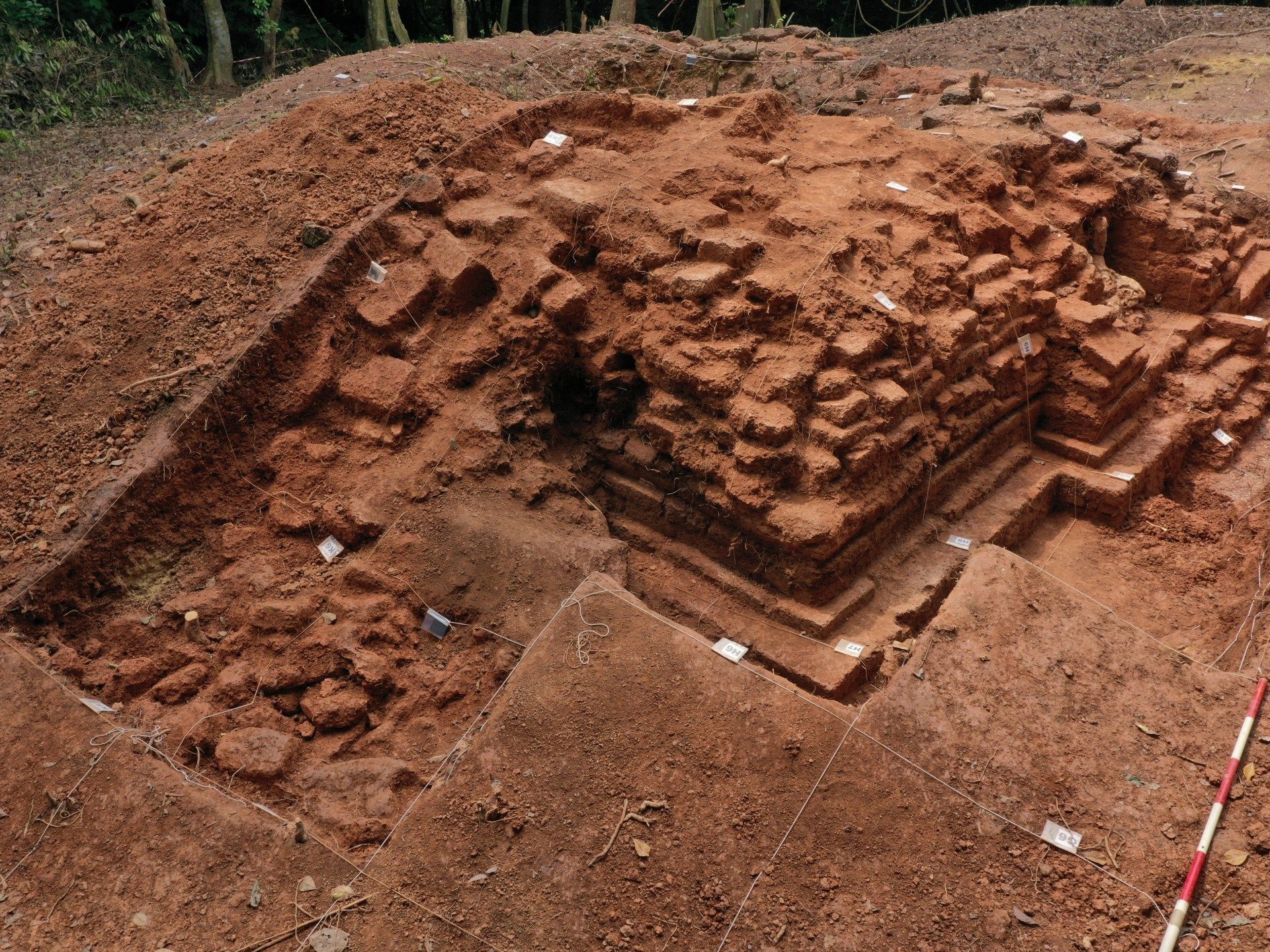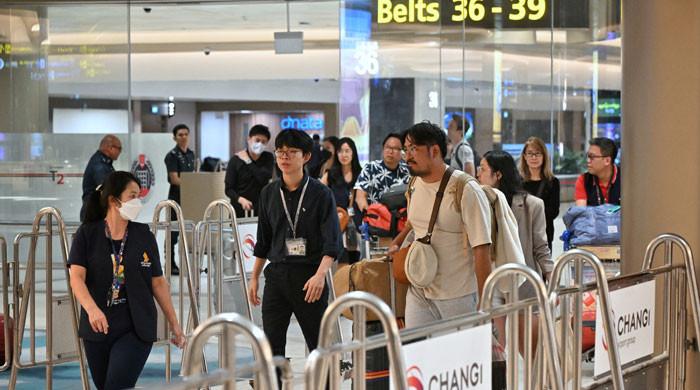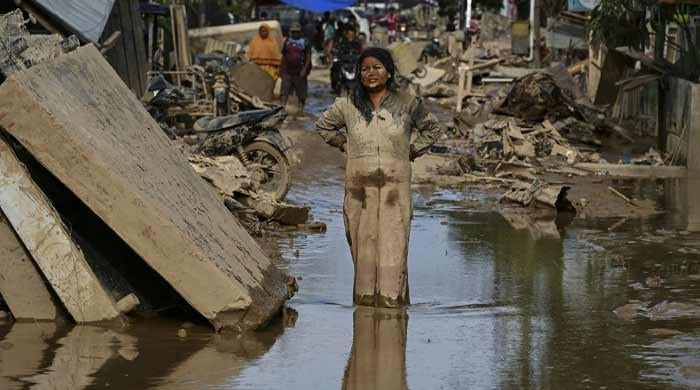Kedah, Malaysia – Until six months ago, none of the inhabitants of the village of Bukit Choras, nestled among rice fields near the steep, lush hill of the same name in northwest Malaysia, had any idea that they had been living next to an entire archaeological wonder. his life. .
Only after a team of 11 researchers cleared the thick bushes and secondary jungle from the hilltop, and gently scraped the ground, was a missing piece of Southeast Asian history revealed.
The 1,200-year-old Bukit Choras Buddhist stupa was discovered last August in Malaysia's Bujang Valley, a river basin dotted with several clusters of protohistoric sites in the country's northwestern state of Kedah.
The stupa is the best preserved in the country and experts say it could hold the key to Malaysia's long history of multiculturalism.
“This site is an anomaly because it stands on its own,” Nasha Rodziadi Khaw told Al Jazeera. Nasha is the principal investigator of the team from the Center for Global Archaeological Research (CGAR) at the University of Science Malaysia on the northwestern island of Penang, which supervised the excavation between August 28 and September 12 last year.
Bukit Choras is located near the small town of Yan, on the south coast of Kedah, about 370 kilometers north of the capital, Kuala Lumpur.
Unlike the 184 previously identified archaeological sites in the Bujang Valley, which lie to the south, the stupa is isolated on the northern side of Mount Jerai, which was once a cape and a key navigation point for seafaring traders who They ventured to this part of the world from places as far away as the Arabian Peninsula.
“We are still not sure about the role of Bukit Choras. It may have been a military garrison or a coastal trading post, but we need to do more excavation. [to assess]. According to our preliminary findings, it shows many similarities with other sites found in Java and Sumatra, Indonesia,” said Nasha, whose team will continue working on the site during the first half of 2024.
A sad discovery
According to Nasha, Bukit Choras was first reported in 1850 by a British officer searching for treasure, and then, in 1937, briefly studied by another British scholar, H. G. Quaritch Wales. Wales carried out some minor excavations, but only reported finding a square Buddhist stupa, noting its measurements. He never provided any illustrations or plaques for the site.
Almost 50 years later, in 1984, the then director of the Bujang Valley Archaeological Museum returned to Bukit Choras to clean and document the site, but the site remained largely untouched.
“I realized that no one had done a proper investigation [since then] and managed to get funding to inspect the site in 2017,” Nasha told Al Jazeera.
“We used electronic waves to physically detect what was hidden underground and discovered that there were some large structures underneath.”
Nasha received more funding from the Malaysian Ministry of Higher Education to carry out proper excavations in 2022, and his team was stunned to discover how well preserved the site was compared to those unearthed in the Bujang Valley between the 1930s and 1950s, some of which had deteriorated. due to erosion, human activities and even accidental destruction.
“At first we only excavated 40 percent of the entire Bukit Choras site and found a stupa about nine meters long,” Nasha said. “But the most important discovery was two stucco statues of Buddha in good condition that had never been found in the area before.”
Nasha explained that at the time stucco was thought to only be found in Java and Sumatra, in neighboring Indonesia, as well as in India.
ancient ties
Located in two niches along with an inscription in Pallava (the language of the Pallava dynasty that ruled in southern India between the 3rd and 8th centuries AD), the two Buddha statues from Bukit Choras have architectural features that resemble the of other ancient artifacts from the Srivijaya kingdom that prospered between the 7th and 11th centuries AD, in an area from southern Thailand, across the Malay Peninsula and to Java. The statues are now being studied and restored at CGAR on the island of Penang.
“The discovery of two human-sized statues still intact and the inscription is very important for future studies,” Mohd Azmi, commissioner of Malaysia's Department of National Heritage, told Al Jazeera. “This demonstrates that the site has not been disturbed and has the potential to provide new evidence about the history of ancient Kedah.”
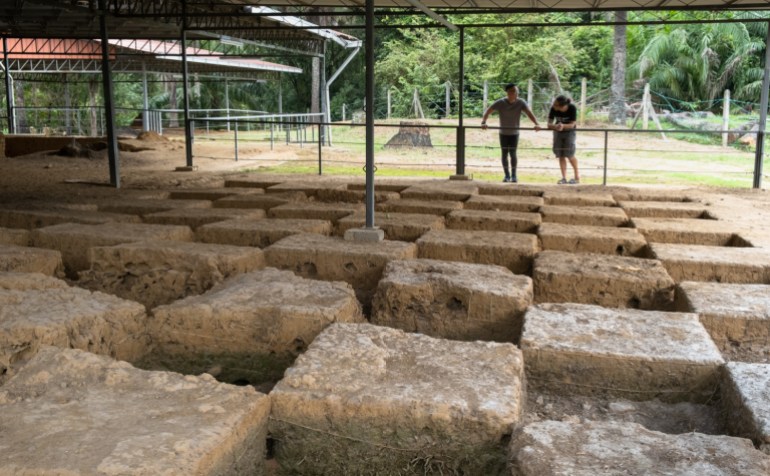
The discoveries in the Bujang Valley bear witness to an ancient civilization that archaeologists refer to as the “Ancient Kingdom of Kedah.” It prospered between the 2nd and 14th centuries AD, spreading along the northwest coast of the Malay Peninsula and into Thailand before the arrival of Islam in the region.
Ancient Kedah became rich from international trade and the production of iron and glass beads, thriving as an ancient multi-ethnic and multi-religious Southeast Asian polity where foreign residents and traders lived together.
Nasha points out that finds in the area suggest that for centuries, traders from China, India and even the Middle East came to the area to do business and were often forced to spend long periods in Kedah during the harsh monsoon seasons. made it difficult to return home. impossible.
The temples and artifacts were built by local workers mixing architectural motifs and foreign knowledge with two main influences.
“First is Buddhism, classified in areas such as Sungai Mas, Kuala Muda and Sungai Batu in Semeling, plus the most recent is the temple site in Bukit Choras,” explained Asyaari Muhamad, a senior archaeologist and director of the Institute of the Malay World and Civilization at Universiti Kebangsaan Malaysia, in reference to some of the sites in the Bujang Valley.
“The rest, such as the archaeological site in the Pengkalan Bujang complex [near the village of] Merbok, received Hindu influences. This classification is [based on] the discovery of artifacts and temple structures that symbolize the religious beliefs or influences of that time,” he said.
All temples in ancient Kedah functioned as places of worship primarily for the mixed population of merchants and migrant workers.
“In [the area of] In Sungai Bujang, for example, most of the temples are clustered near the main commercial area and used to serve the religious needs of merchants, while in Sungai Muda, they served traders and workers in the local glass bead industry. and ceramics. making sites,” Nasha said.
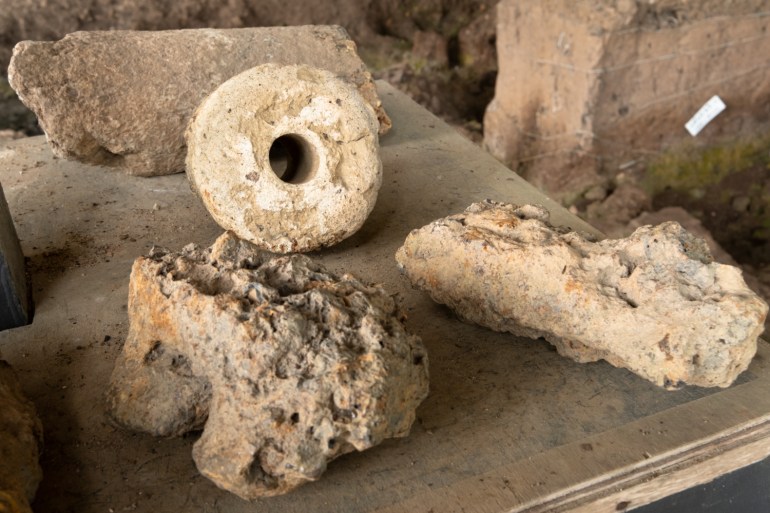
“We believe the same thing occurred at Sungai Batu, the main site of the iron smelting furnaces of ancient Kedah, where we found evidence of a community and its temples. But no evidence of economic or industrial activities has yet been found in Bukit Choras,” he said.
Archaeological discoveries suggest that while ancient Kedah prospered for centuries, it went into decline when the climate transformed the large sea bay and accessible waterways leading to the Sungai Batu iron smelting site into mangrove swamps and tidal swamps that were impassable for ships.
“Multiculturalism is not new to the Malay Peninsula and former Kedah,” Nasha added. “It started with trade in the 2nd century, when there was an increase in connectivity between China, India and Southeast Asia, and it continued well into the kingdom of Melaka, which we know was also a multicultural society, and it continues today.”
21st century Malaysia is also a multi-ethnic and multi-religious Southeast Asian nation composed of a majority of Malay Muslims, followed by Chinese, Indians and more than 50 other ethnic groups living throughout the peninsula and the northern half of the island of Borneo. in the states of Sarawak and Sabah.
Asyaari said it was important for researchers to collaborate and achieve a better understanding of the origins of civilizations inside and outside the Malay Peninsula.
“Any statements about new or previous findings should be carefully examined to ensure that […] a theory, a discovery and the results of a study do not become an issue of a controversial nature,” he said.

